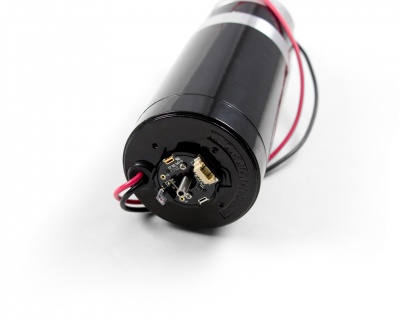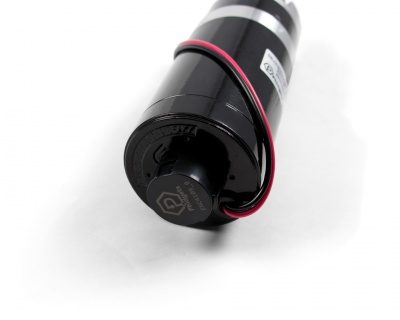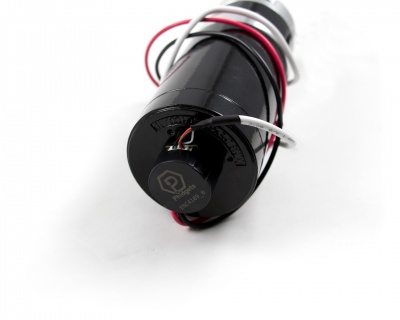ENC4109 User Guide
From Phidgets Support
Getting Started
Checking the Contents

|
You should have received:
|
In order to test your new Phidget you will also need:
| |
Connecting the Pieces
|
Take the plastic cap and align the hole with the white connector. Press the cap on so that the tabs on either side click in. |
| |
|
Attach the cable to the white connector. You may need to push on either side with your fingernail or a screwdriver to ensure that it's fully inserted. |
| |
|
For further instructions, visit the user guide for the motor controller and encoder interface Phidget that you're using. |
|





